Autopilot: Configure Salesforce field mappings
When you connect to Salesforce, Autopilot will sync the standard Salesforce fields by default, and keep them in sync automatically. You can learn more about this in the FAQ.
However, if you wish to do so, you can:
- sync custom fields; and
- change which Autopilot fields the standard Salesforce fields are mapped to.
This will allow your team more flexibility to create smart segments and Journeys based on the data in your Salesforce account. This article covers both configuring your field mappings, as well as choosing your sync direction.
Mapping Fields
1. In Settings, choose "Salesforce Sync" and then "Field Mappings":
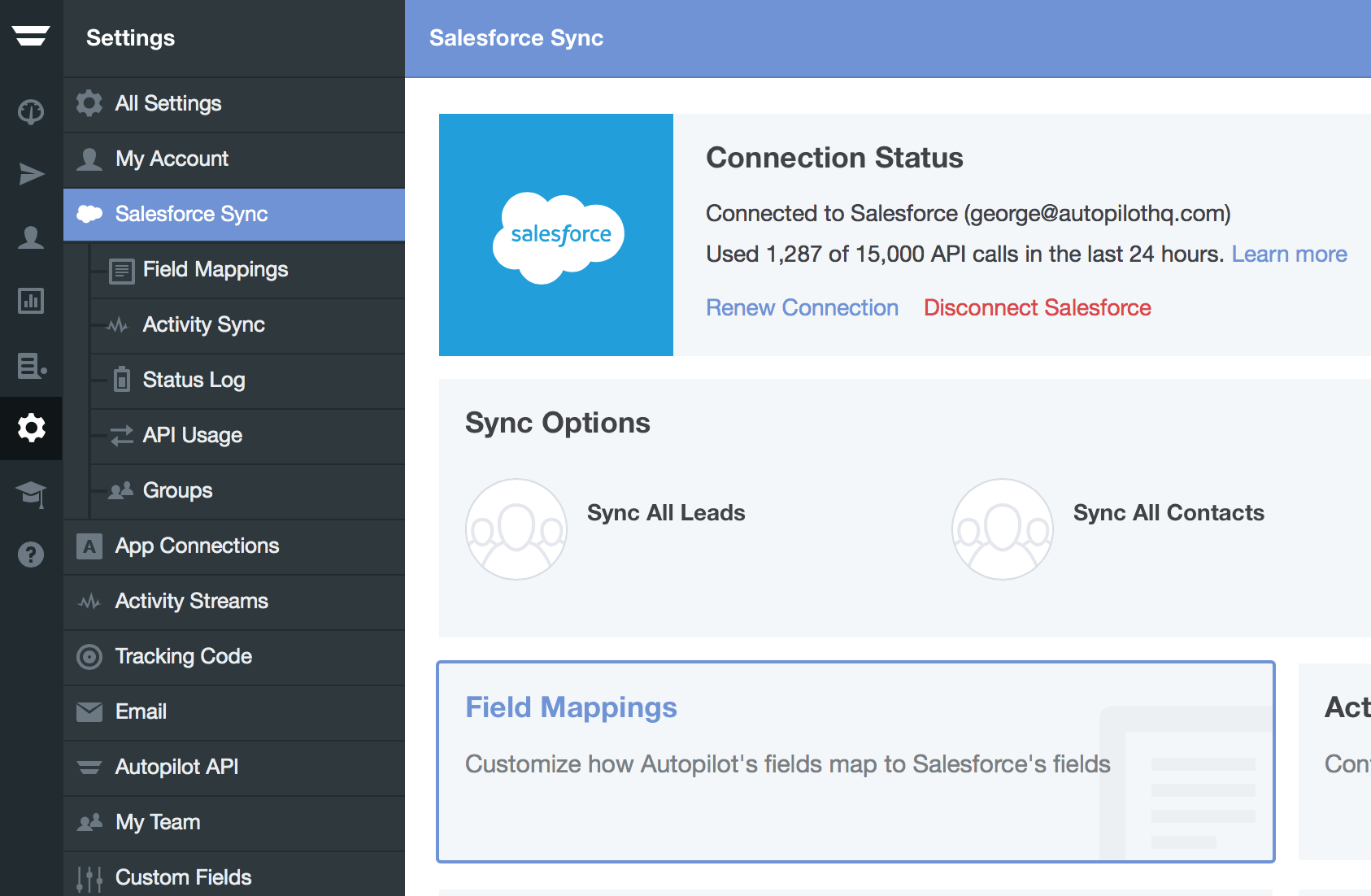
2. Select the Salesforce object for which you'd like to customize the field mappings:
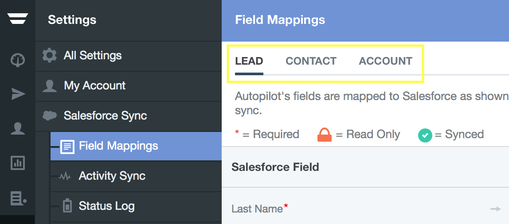
3. Select the Autopilot field you'd like to map to each Salesforce field. If you don't see the Salesforce field you're looking for, click the "Refresh Salesforce Fields" button:
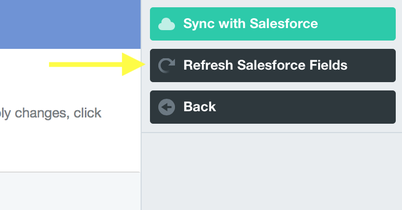
For example, let's say you want to sync "Annual Revenue". You can either select a pre-existing Autopilot custom field, or create a new one by clicking "Add a new field". In this case I'm going to create a new field:
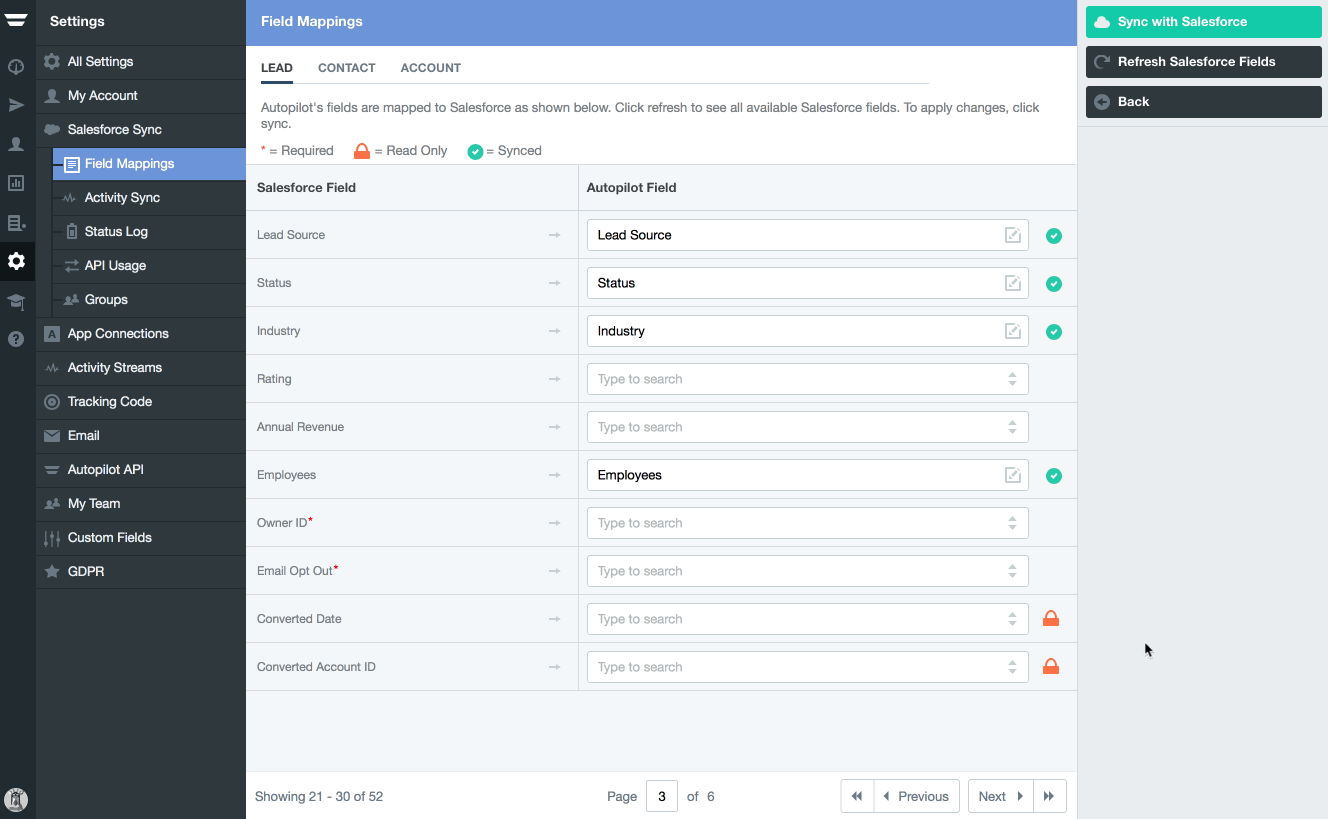
5. When you've completed your field mapping changes, click the "Sync with Salesforce" button in the top right hand corner of the screen to finalize your setup.
Choosing Sync Direction
When you map a field for the first time, you need to decide whether to give preference to the data in Salesforce or Autopilot:

Choose Salesforce to Autopilot if you want to give preference to the data that already exists in Salesforce. This is recommended if the field(s) you're syncing were first created in Salesforce. Think of this option as "pulling" in data from Salesforce to Autopilot.
Choose Autopilot to Salesforce if you want to give preference to the data that already exists in Autopilot. This is recommended if the field(s) you're syncing were first created in Autopilot, and the data stored in them originated from sources other than Salesforce (for example, a form submit, Segment event or spreadsheet import). Think of this option as "pushing" data from Autopilot to Salesforce.
Once a field has been mapped successfully, it will be automatically kept in sync bi-directionally from then on. In other words, if you update a record in one system, it will be automatically updated in the other. You don't need to perform a sync unless you have made field mapping changes.
Each of these options is discussed in further detail below.
1. Salesforce to Autopilot
If you choose Salesforce to Autopilot, you'll need to select which objects to sync:
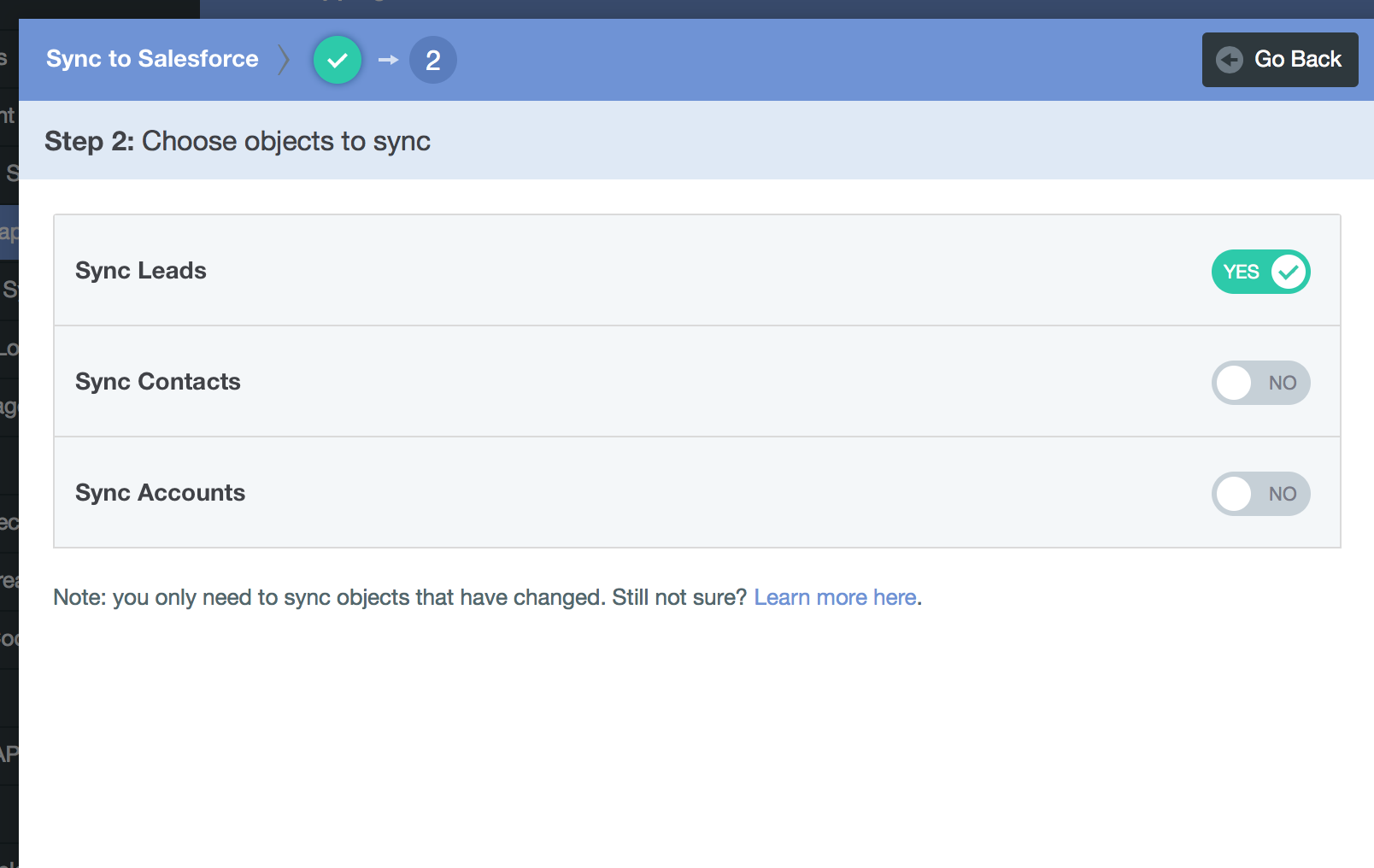
As noted above, you don't need to run a sync manually unless you have made field mapping changes. Everything is already kept in sync automatically. For this reason, to make the sync as fast and efficient as possible, we recommend only syncing those objects for which you've made field mapping changes. To assist you, Autopilot will automatically set objects to "Yes" which have had field mapping changes.
When you are ready to begin the sync, click the "Sync" button.
2. Autopilot to Salesforce
If you've been capturing data in a custom field that has not yet been synced with Salesforce, then you should select the Autopilot to Salesforce option. When you select it, it will show the fields for which there have been mapping changes:
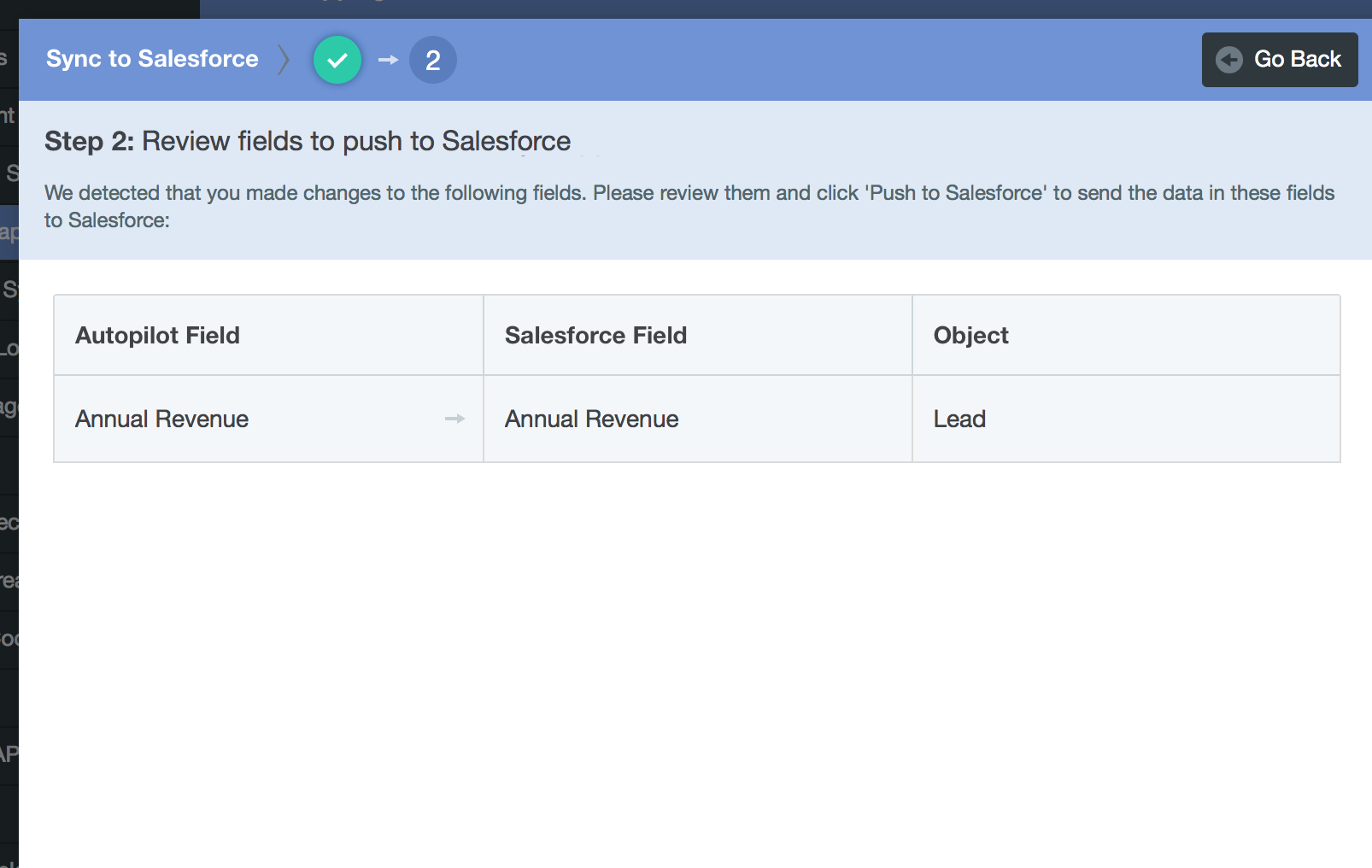
When you have reviewed the fields that will be pushed to Salesforce, click the "Push to Salesforce" button.
Monitoring Sync Progress
Once you have started the sync, you'll be shown its progress. The contacts app will be unavailable during this time. The sync time will vary based on the size of your database, and how many objects you are syncing. Note that you can close your browser or tab during the sync; it will finish either way.
When the sync is complete, you will see a green tick next to fields that are synced:

You only need to follow this process again if you need to make additional field mapping changes. As noted above, everything is kept in sync automatically. You can learn more about this in the FAQ.
Note that even after a successful sync, when you view a contact, fields will only show against the contact if they have a value in Salesforce. If they're empty in Salesforce, they won't be shown in Autopilot. This is done intentionally to keep the Autopilot contact interface simple.
